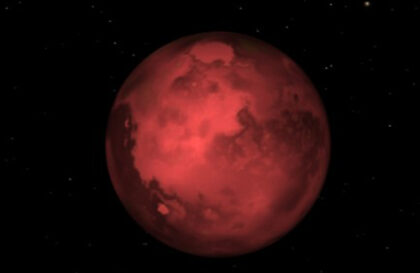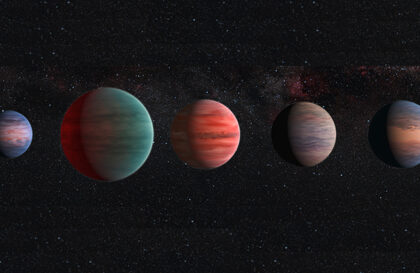Bernard’s Star is 99% Likely to Have a Planet
After archival data pointed to the possible existence of a planet orbiting Bernard’s Star, researchers began extensive work to confirm it. A press release from the European Southern Observatory (ESO), published in 2018, presented evidence of an exoplanet that is the second closest to Earth.
Combining 20 years of observations, scientists have identified a planet candidate orbiting one of the Sun’s closest neighbors—Bernard’s Star. This star had previously drawn attention for its rapid motion and a speculated but later debunked exoplanet system. Now, scientists are 99% confident of the planet’s existence.
This newly discovered world is a cold super-Earth with a mass at least 3.2 times that of Earth and is located 60% closer to its star than Earth is to the Sun. Despite this, Bernard’s Star is so dim and cold that the planet receives only 2% of the energy that Earth gets from the Sun, making it an icy world.
How Was the Exoplanet Discovered?
Scientists employed the Doppler method to analyze the star’s velocity variations caused by the gravitational pull of a planet orbiting around it. This technique allows for the determination of the planet’s minimum mass. After examining data from the 1990s, astronomers noticed regular changes in the star’s motion with 233 days, indicating the planet’s orbital period. This led to the calculation that the planet’s minimum mass is three times that of Earth.
Why Was It So Difficult to Discover Earlier?
Bernard’s Star is located at a distance of 1.828 parsecs (5.96 light-years) from the Sun, making it one of the closest stars to the Solar System (only the three stars forming the Alpha Centauri system are more intimate). Planets have been found around stars thousands of light-years away from us. So why wasn’t this planet discovered earlier?
The recently discovered planet candidate was challenging to detect due to its minimal influence on the star’s velocity. The planet changed the star’s speed by only 4.3 km/h in each direction, with a long period of 233 days. Confirming its existence required analyzing about 800 velocity measurements collected by seven instruments, including the high-precision HARPS spectrograph on ESO’s 3.6-meter telescope and the CARMENES instrument at the Calar Alto Observatory. Thus, accumulating a large volume of data allowed for high-confidence assertions about the planet’s existence.
Where Does the 1% Uncertainty Come From?
Astronomers are already 99% certain of the planet’s existence. However, a slight error of 3.6 km/h in each radial velocity measurement introduces uncertainty, especially considering the velocity values of 4.3 km/h that scientists are working with. Hundreds of measurements are needed to compensate for this error.
The accuracy also depends on the stability of the instruments over decades, and all factors, including temperature changes, must be accounted for in these corrections.
What If It’s Not a Planet?
There is a slight chance that star spots on the slowly rotating surface of Barnard’s Star (rotation period of 140 days) could create distortions in the signal. The probability of this scenario is estimated at 0.8%, but it’s not zero. Additional research will help reduce this uncertainty and strengthen confidence in the planetary origin of the detected radial velocity fluctuations.
Scientists plan additional radial velocity measurements to reduce uncertainty. They are also considering using telescopes like Hubble and the Gaia mission for further research. Despite the difficulty of directly imaging the planet due to its dimness, ESO’s Extremely Large Telescope, set to gather its first technical light in 2027, may offer new opportunities to study its characteristics. This planet is a billion times dimmer than its parent star, and ESO’s Extremely Large Telescope could provide new insights.
What Are the Indicators of This Exoplanet’s Existence?
Data indicates that Barnard’s Star has a short 233-day planetary rotation period and long-term velocity changes spanning 15-20 years. The latter may be associated with the star’s magnetic activity rather than an additional Neptune-like planet. Using telescopes like Hubble or Gaia could assist in further studying these long-term changes.
Why Is It Important to Search for Exoplanets?
Studying planets close to us expands our understanding of the cosmos and can answer questions about how unique life on Earth is. Understanding the nature and origins of these planets may hint at the prevalence of life throughout the Universe.
While much of the cosmos remains unexplored, our current capability to investigate it is limited to observations from Earth. However, gathering data on nearby planets serves as a first step towards potential interstellar travel in the future.
Image credit:
https://www.eso.org
https://www.eso.org
https://elt.eso.org






